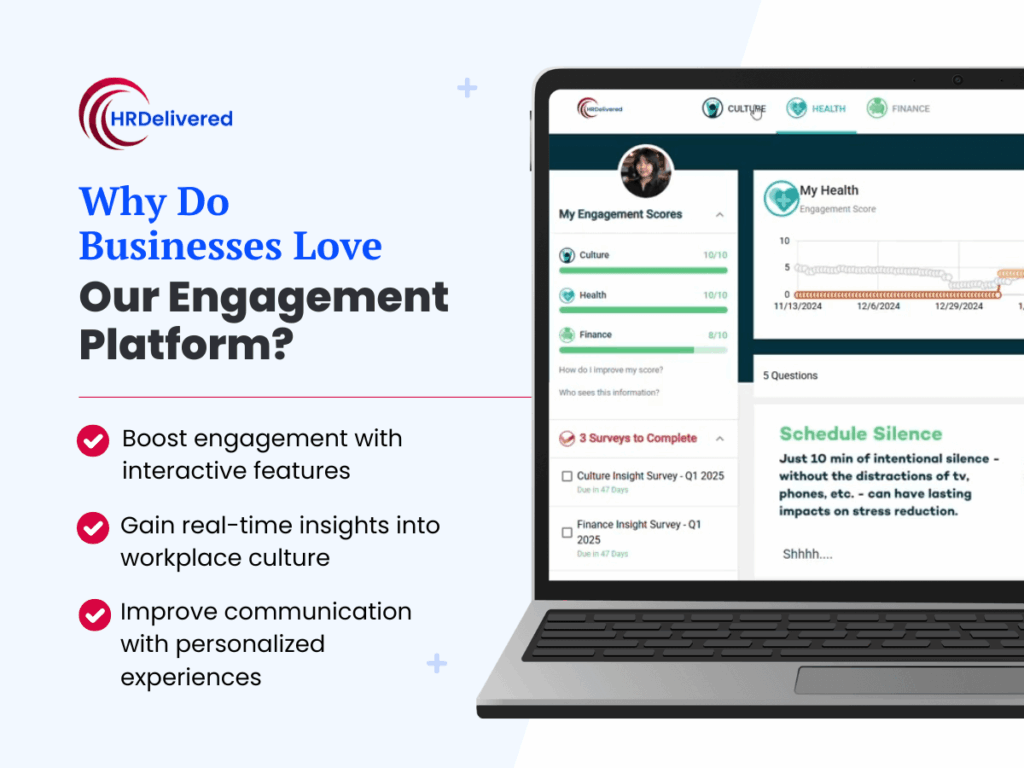Remote work is here to stay, and how to engage remote employees is a growing priority. While flexible schedules and broader talent access are major benefits, remote work also brings challenges—from communication breakdowns to feelings of isolation. Keeping your team engaged requires intention, consistency, and a thoughtful approach.
Here’s how to engage remote employees while building a positive culture, no matter where your team is based.
1. Set the Foundation with Clear Communication
Good communication is the foundation of employee engagement, especially for remote teams. Without the benefit of face-to-face interactions, it’s easy for team members to feel disconnected or out of the loop.
Best practices:
- Create communication guidelines that outline when and how to use channels like Slack, email, and video calls.
- Host regular check-ins, one-on-ones, and team meetings to ensure alignment and connection.
- Encourage transparency and consistent updates, especially around company-wide goals or changes.
Tip: Video conferencing tools can help replace some of the nonverbal cues lost in text-based communication. Seeing a friendly face goes a long way.
2. Make Remote Employees Feel Part of the Team
Remote employees should never feel like an afterthought. Make sure they feel just as valued and involved as on-site team members.
Ideas to try:
- Celebrate wins publicly, and give shoutouts during team meetings.
- Include remote team members in decision-making when appropriate.
- Encourage participation in virtual events or brainstorming sessions.
Small gestures—like including them in group chats or sending company swag—can build a stronger sense of belonging.
3. Promote Work-Life Balance and Flexibility
One of the biggest perks of remote work is flexibility, but without boundaries, it can lead to burnout. Support your employees by helping them create sustainable routines.
Tips:
- Normalize taking breaks and logging off at reasonable hours.
- Respect time zones when scheduling meetings.
- Encourage using PTO and personal days, even when working from home.
A healthy balance improves morale and long-term engagement.

4. Use an Employee Engagement Platform
Technology can be your best ally in keeping remote teams connected. A great employee engagement platform can simplify communication, foster collaboration, and help you gather real-time feedback from your team.
With HRDelivered’s Employee Engagement Platform, you can:
- Run engagement surveys and pulse checks.
- Share updates and recognize employees in one central hub.
- Track sentiment trends and adjust strategies accordingly.
Explore our Employee Engagement Platform
5. Encourage Meaningful Recognition
Recognition is one of the most powerful drivers of engagement. Whether it’s a shoutout in a meeting or a company-wide kudos channel, employees want to feel seen and appreciated.
Keep it simple and consistent:
- Highlight achievements in newsletters or team calls.
- Use peer-to-peer shoutout tools.
- Align recognition with company values and goals.
6. Create Space for Informal Interaction
Remote teams miss out on water cooler conversations and hallway chats. To fill the gap, carve out time and space for informal connection.
Fun ideas for remote engagement:
- Virtual coffee chats or themed happy hours
- Monthly trivia or team-building games
- Slack channels for pets, hobbies, or weekend plans
It might feel lighthearted, but these moments help employees feel more connected.
7. Use Feedback to Shape Your Strategy
The best way to know what remote employees need? Ask them.
Conduct employee engagement surveys to:
- Identify communication gaps
- Spot early signs of disengagement
- Adjust policies and benefits based on actual feedback
8. Align Engagement with Performance and Growth
Remote employees want growth opportunities too. Tie your engagement strategy to goal setting, career development, and regular performance conversations.
You can:
- Set individual goals with clear milestones
- Schedule quarterly check-ins or development chats
- Provide access to online learning and mentorship programs
Engaged employees are those who feel like they’re growing—not just clocking in.
Final Thoughts: Engagement Takes Intention
Keeping a remote workforce engaged doesn’t happen by accident. With the right mix of communication, recognition, flexibility, and the right tools, you can create a thriving remote team that feels connected, supported, and empowered.
Want help building an engagement strategy that works? Get started with us or check out our Employee Retention Plan Template for more ideas.

